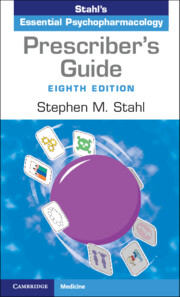THERAPEUTICS
Generic?
Yes
 How the Drug Works
How the Drug Works
Theoretically reduces excitatory glutamate neurotransmission and increases inhibitory GABA neurotransmission
Binds to and blocks certain glutamate receptors, including metabotropic glutamate receptors
Because withdrawal of alcohol following chronic administration can lead to excessive glutamate activity and deficient GABA activity, acamprosate can act as “artificial alcohol” to mitigate these effects
How Long Until It Works
Has demonstrated efficacy in trials lasting between 13 and 52 weeks
If It Works
Increases abstinence from alcohol
If It Doesn’t Work
Evaluate for and address contributing factors
Consider switching to another agent
Consider augmenting with naltrexone
 Best Augmenting Combos for Partial Response or Treatment Resistance
Best Augmenting Combos for Partial Response or Treatment Resistance
Naltrexone
Augmentation therapy may be more effective than monotherapy
Augmentation with behavioral, educational, and/or supportive therapy in groups or as an individual is probably key to successful treatment
Tests
None for healthy individuals
SIDE EFFECTS
How Drug Causes Side Effects
Theoretically, behavioral side effects due to changes in neurotransmitter concentrations at receptors in parts of the brain and body other than those that cause therapeutic actions
Gastrointestinal side effects may be related to large doses of a drug that is an amino acid derivative, increasing osmotic absorption in the gastrointestinal tract
Notable Side Effects
Diarrhea, nausea
Anxiety, depression
 Life-Threatening or Dangerous Side Effects
Life-Threatening or Dangerous Side Effects
Suicidal ideation and behavior (suicidality)
Weight Gain
Reported but not expected
Sedation
Reported but not expected
What to Do About Side Effects
Wait
Adjust dose
If side effects persist, discontinue use
Best Augmenting Agents for Side Effects
Dose reduction or switching to another agent may be more effective since most side effects cannot be improved with an augmenting agent
DOSING AND USE
Usual Dosage Range
666 mg 3 times daily (>60 kg)
666 mg 2 times daily (<60 kg)
Dosage Forms
Tablet 333 mg
How to Dose
Patient should begin treatment as soon as possible after achieving abstinence
Recommended dose is 666 mg 3 times daily; titration is not required
 Dosing Tips
Dosing Tips
Providing educational materials and counseling in combination with acamprosate treatment can increase the chances of success
Patients should be advised to continue treatment even if relapse occurs, and to disclose any renewed drinking
Although absorption of acamprosate is not affected by food, it may aid adherence if patients who regularly eat 3 meals per day take each dose with a meal
Adherence with 3 times daily dosing can be a problem; having patient focus on frequent oral dosing of drug rather than frequent drinking may be helpful in some patients
Overdose
Limited available data; diarrhea
Long-Term Use
Has been studied in trials up to 1 year
Habit Forming?
No
How to Stop
Taper not necessary
Pharmacokinetics
Terminal half-life 20–33 hours
Excreted unchanged via the kidneys
 Drug Interactions
Drug Interactions
Does not inhibit hepatic enzymes, and thus is unlikely to affect plasma concentrations of drugs metabolized by those enzymes
Is not hepatically metabolized and thus is unlikely to be affected by drugs that induce or inhibit hepatic enzymes
Concomitant administration with naltrexone may increase plasma levels of acamprosate, but this does not appear to be clinically significant and dose adjustment is not recommended
 Other Warnings/Precautions
Other Warnings/Precautions
Monitor patients for emergence of depressed mood or suicidal ideation and behavior (suicidality)
Use cautiously in individuals with known psychiatric illness
Do Not Use
If patient has severe renal impairment
If there is a proven allergy to acamprosate
SPECIAL POPULATIONS
Renal Impairment
For moderate impairment, recommended dose is 333 mg 3 times daily
Contraindicated in severe impairment
Hepatic Impairment
Dose adjustment not generally necessary
Cardiac Impairment
Limited data available
Elderly
Some patients may tolerate lower doses better
Consider monitoring renal function
 Children and Adolescents
Children and Adolescents
Safety and efficacy have not been established
 Pregnancy
Pregnancy
Effective June 30, 2015, the FDA requires changes to the content and format of pregnancy and lactation information in prescription drug labels, including the elimination of the pregnancy letter categories; the Pregnancy and Lactation Labeling Rule (PLLR or final rule) applies only to prescription drugs and will be phased in gradually for drugs approved on or after June 30, 2001
Controlled studies have not been conducted in pregnant women
In animal studies, acamprosate demonstrated teratogenicity in doses approximately equal to the human dose (rat studies) and in doses approximately 3 times the human dose (rabbit studies)
Pregnant women needing to stop drinking may consider behavioral therapy before pharmacotherapy
Not generally recommended for use during pregnancy, especially during first trimester
Breast Feeding
Unknown if acamprosate is secreted in human breast milk, but all psychotropics are assumed to be secreted in breast milk
Recommended either to discontinue drug or bottle feed
THE ART OF PSYCHOPHARMACOLOGY
Potential Advantages
Individuals who have recently abstained from alcohol
For the chronic daily drinker
Potential Disadvantages
Individuals who are not abstinent at time of treatment initiation
For binge drinkers
Primary Target Symptoms
Alcohol dependence
 Pearls
Pearls
Because acamprosate serves as “artificial alcohol,” it may be less effective in situations in which the individual has not yet abstained from alcohol or suffers a relapse
Thus acamprosate may be a preferred treatment if the goal is complete abstinence, but may not be preferred if the goal is reduced-risk drinking





